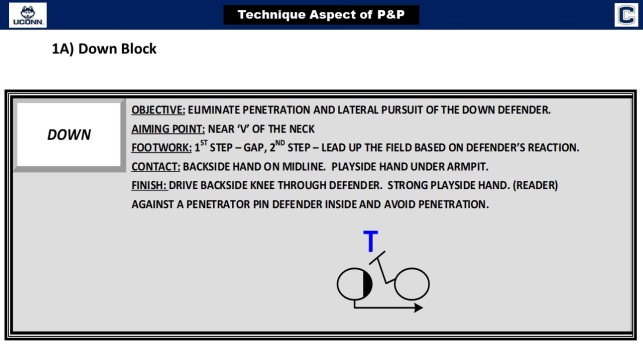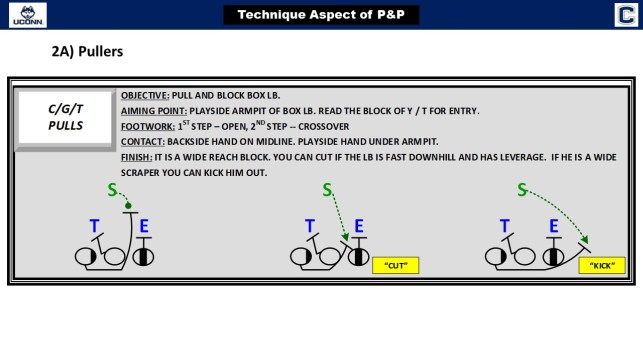By Mike Kuchar
With Frank Giufre
Offensive Line Coach
University of Connecticut
Editor’s Note: This is the second report in a two-part series on UCONN’s Pin and Pull run concept. Part one focused on the three-man surface concept. Many of the block techniques associated with this report are further explained in .
For most offensive play callers, the 10 personnel four wide run game can be very limited. You have your base inside game such as inside zone or trap and your base outside run game like stretch or outside zone, but after that it gets limited. While many coaches prefer to run some toss game out of three-man surface bunch sets, the same can be done from the two-surface side without a tight end. The benefits are simple- it gets the ball on the perimeter in a hurry with bigger bodies lead blocking for the ball carrier. But in order to run the scheme with a great deal of efficiency, it’s important to educate the back on whom to read based on the defensive front presented. With many defensive structures relying on pressure tendencies in the fringe red zone area (where the play is mostly run), the offensive line must be able to protect any potential leakage that can stall the play.
Advantages of Tagging Pin and Pull Runs
- Uses high percentage down blocks to separate the defense. Not necessary to crush defenders, just to eliminate penetration.
- Opportunity to get two pullers in front of the ball carrier.
- Handles bigger defenders in the box
- Gets the ball out in the perimeter. As Coach Guifre told us, “the offensive line likes screens but this gets them running to hit a defensive back. It becomes fun. You’re not trying to knock people off the ball.”
- Efficient red zone play because of the tight formation spacing.
Box Blocking Rules
The bunch toss concept can be manipulated in several ways to attack different fronts- all of which are included in this report. In most cases, the first puller (usually the Tackle) will block the first defender past the identification.
But regardless of the tags, there are three primary blocks associated with blocking the box in this run game:
- Down Block

- Pull Blocks










